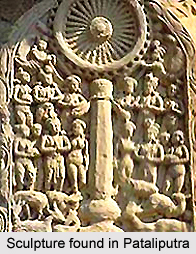History of Muzaffarpur District reveals that the Muzaffarpur district is better known as the `The Land of Leechi` was created in 1875 for the sake of administrative convenience by splitting up the earlier district of Tirhut.

The present district of Muzaffarpur was formed on 18th century and named after Muzaffar Khan. He was an Amil (Revenue Officer) under British Rule. The district is bordered by East Champaran District and Sitamarhi districts on North, by Vaishali and Saran districts on the south, on the East by Darbhanga and Samastipur district and on the West by Saran and Gopalganj districts. Now it has won international encomiums for its delicious Shahi Leechi and China Leechi.
Legend of Muzaffarpur District
Muzaffarpur District can be traced back through the ancient Indian epic Ramayana, which still bears a significant role in Indian civilization. According to the legend, Rajarshi Janaka ruled Videha, the mythological name of this entire region including eastern Nepal and northern Bihar. Sitamarhi, a place in this region, bears a value of sacred Hindu belief where, Sita sprang to life out of an earthen pot while Rajarshi Janaka was tilling the land.
Political History of Muzaffarpur District
The recorded history of the district dates back to the rise of the Vrijjan Republic. The center of political power also shifted from Mithila to Vaishali. The Vrijjan Republic was a confederation of eight clans of which the Licchavis were the most powerful and influential. Even the powerful kingdom of Magadha had to conclude matrimonial alliances in 519 B.C. with the neighboring estates of the Licchavi Tribe. Ajatshatru invaded Vaishali and extended his sway over Tirhut. It was at this time that Pataliputra which is the modern Patna was founded at the village Patali on the banks of the sacred Ganga River and Ajatshatru built an invincible fortress to keep vigil over the Licchavis on the other side of the river. Vaishali has also been a center of religious renaissance. Baso Kund was the birth place of Lord Mahavira, the 24th Jain Tirthankara.
From the visit of the Hieuen Tsang`s till the rise of the Pala Dynasty, Muzaffarpur was under the control of Maharaja Harshavardhan, a powerful sovereign of North India. After 647 A.D. the district passed on to the local chiefs. In the 8th century A.D. the Pala kings continued to have their hold over Tirhut until 1019 A.D. Chedi kings of Central India also exercised their influence over Tirhut till they were replaced by the rulers of the Sena Dynasty towards the close of the 11the century.
Ghais-u-ddin Iwaz, the ruler of Bengal, was the first Muslim invader of Tirhut but he could not conquer the kingdom. However in 1323 Ghiyas- ud- din Tughlaq established his control over the district.
The history of Muzaffarpur will remain incomplete without a reference to the Simraon dynasty and its founder Nanyupa Deva who extended his power over the whole of Mithila and Nepal. During the regime of Harasimha Deva, the last king of the dynasty, Tughlaq Shah Tughlaq invaded Tirhut in 1323 and gained control over the territory. Tughlaq Shah handed over the management of Tirhut to Kameshwar Thakur. Thus, the sovereign power of Tirhut passed from the Hindu chiefs to the Muslims but the Hindu chief continued to enjoy complete autonomy uninterruptedly.
Towards the close of the 14th century the whole of North Bihar including Tirhut passed on to the kings of Jaunpur and remained under their control for nearly a century until Sikandar Lodi of Delhi defeated the king of Jaunpur. Meanwhile, Hussain Shah, the Nawab of Bengal had become so powerful that he exercised his control over large tracts including Tirhut. The emperor of Delhi advanced against Hussain Shah in 1499 and got control over Tirhut after defeating its Raja. The power of the Nawabs of Bengal began to wane and with the decline and fall of Mahood Shah, north Bihar including Tirhut formed a part of the mighty Mughal Dynasty. Though Muzaffarpur with the entire north Bihar had been annexed yet the petty powerful chieftains continued to exercise effective control over this area till the days of Daud Khan, the Nawab of Bengal. Daud Khan had his stronghold at Patna and Hajipur and after his fall a separate Subah of Bihar was constituted under the Mughal Dynasty and Tirhut formed a part of it.
The victory of East India Company in 1764 at the Battle of Buxar gave them control over whole of Bihar and they succeeded in subduing the entire district. The success of the insurgent at Delhi in 1857 caused grave concern to the English inhabitants in this district and revolutionary fervor began to permeate the entire district. Muzaffarpur played its role and was the site of the famous bomb case of 1908. The young Bengali revolutionary, Khudiram Bose, a boy of barely 18 years was hanged for throwing the bomb at the carriage of Pringle Kennedy who was actually mistaken for Kingsford, the District Judge of Muzaffarpur. After independence, a memorial to this young revolutionary patriot was constructed at Muzaffrapur, which is still present there. The political awakening in the country after the First World War stimulated nationalist movement in Muzaffarpur district also.






